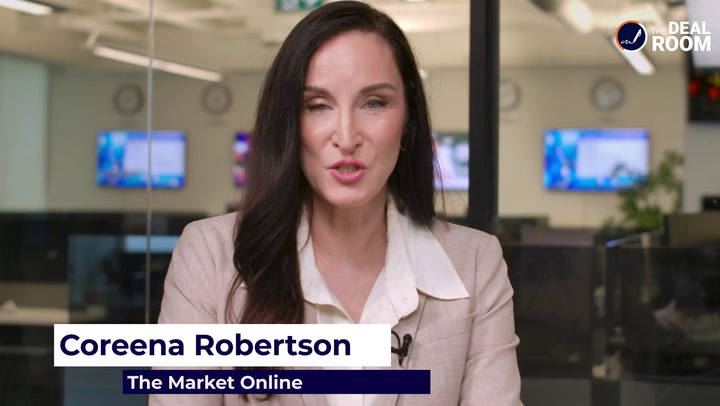As worries rise about an imminent financial crisis, it’s important to rationally assess current conditions.
Inflation stands at 7.7. per cent, near a 40-year high, due to supply disruptions from COVID safety measures and the Russia-Ukraine war coupled with excess stimulus capital and the world’s gradual return to service-based consumption.
With prices soaring, investors are uncertain about near-term oil demand, a sentiment that caused WTI to drop near US$104 per barrel – down about 12 per cent for the month and up more than 35 per cent this year – as Russian supply remains at high risk from international efforts to find alternate fuel sources. Other major commodities including copper, nickel, wheat, palm oil and natural gas are also in monthly downtrends.
Wages, in turn, are also rising, with the unemployment rate sitting at a 46-year low of 4.9 per cent. Workers have pocketed an average hourly wage gain of 5.2 per cent from last June, up from 3.9 per cent in May, with the economy shedding 43,200 jobs as companies struggle to retain top talent.
The numbers suggest Canada is near maximum employment, meaning further growth will be a tall order without offering higher salaries and fueling inflation to even higher levels, which will likely dampen earnings potential over the short term. Markets have caught on to this state of affairs, with the TSX down 10.17 per cent year to date, the U.S. market down 18.12 per cent, Developed International down 20.54 per cent and Emerging Markets down 16.72 per cent, with growth companies suffering the most as their profits sit the farthest out into the future.
To remedy this, The Bank of Canada is expected to hike its overnight rate to 2.25 per cent from 1.5 per cent at its meeting next week. Its three hikes thus far this year have already begun to slow certain industries down, most notably housing, with Toronto home sales down 41.4 per cent since last June and down 11.1 per cent month-over-month.
The central bank will be relying on strong consumer spending, up steadily since the initial COVID drop, and a brimming workforce to help soften the landing initiated by its recent hawkish shift.
Taken as a whole, the probability of the Canadian economy contracting for two consecutive quarters – the technical definition of a recession – is the highest it has been since COVID reared its ugly head. RBC forecasts this recession to occur between Q2 and Q3 2023, with conditions normalizing once rates begin to fall, but there is no certainty in crystal balls, however data-driven they may be.
As investors, the guiding light is perennially the same, which is how to best navigate prevailing market sentiment – extreme pessimism, in this case – to maximize returns and fulfill our financial goals. To this end, let us sketch out a brief framework for what seems like tough times ahead.
The first thing to remember when the market senses trouble a-brewing is that a crisis always feels like the first time when you’re living it, though they have come to pass many times before.
The precipitous drop from COVID in February 2020, the even quicker drop in Q4 2018 due to rising U.S. interest rates, and the global 2008 collapse sparked by lax U.S. mortgage issuance are three recent examples of the TSX’s resiliency in the face of widespread investor fear. The index is up by 25 per cent over the past 5 years and 140 per cent over the past two decades.
The likely oncoming slowdown will be no different, so long as you take a 10,000-foot view of the blood in the streets. In practice, this means three things:
- Combatting the temptation to succumb to recency bias, fueled by apocalyptic financial media coverage, and suppose that current conditions will continue indefinitely in direct contradiction to market history. It’s this mindset that leads to moving one’s portfolio to cash and trying to time the bottom, which even the most successful investment managers fail to do consistently
- Eschewing the false dichotomy, also prevalent in the media, between waiting for more stable conditions to invest and sticking to tried and true valuation principles regardless of conditions. At the heart of this distinction lies a misunderstanding of how opportunity works in investment markets compared to other markets; namely, that a stock that’s on sale is somehow a cause for worry, whereas a cheaper meal, garment or medicine should be snapped up forthwith. If the company behind the stock has favorable future prospects and is trading at a discount to its intrinsic value, the purchases should be similarly enticing
- Finally, every investor should understand the mental and emotional toll that allows equities to offer a positive expected return. Markets are volatile by nature, as they represent communities of investors with widely differing goals and education levels making the best decisions possible for their respective portfolios. The logical consequence here is that prices will often overshoot to the upside and the downside on their way to accurately reflecting business value over the long term. It’s this bumpy ride and the strength to endure it that determine how satisfactory your return will be when it comes time to sell. In sum, a portfolio of well-researched, high-conviction holdings with a sufficiently long time horizon is no match for whatever short-term pain the market will inevitably throw your way
With a more stable handle on current economic conditions, we can now take a closer look at five companies commanding our readers’ interest over the past week.
Else Nutrition (TSX:BABY) closes $7.35M public offering
Else has closed a marketed public offering for gross proceeds of approximately $7.35M.
CEO Hamutal Yitzhak sat down with Daniella Atkinson to discuss the influx of new capital.
Else Nutrition (BABY) closed down by 3.28 per cent over the past week trading at $0.59 per share.
Big Ridge Gold (TSXV:BRAU) releases additional results from Hope Brook phase I drill program
Big Ridge has announced additional diamond drill results from its 25,000 m phase I exploration program at the Hope Brook Gold Project in Newfoundland and Labrador.
Results confirm gold and copper mineralization outside the current resource envelope.
President and CEO Mike Bandrowski joined Daniella Atkinson to discuss the results.
Big Ridge (BRAU) closed down by 7.69 per cent over the past week trading at $0.18 per share.
Trillion Energy International (CSE:TCF) provides drilling program update
Trillion has provided a progress update on its multi-well SASB natural gas field development drilling program scheduled to begin in August.
The company expects a significant uptick in revenue as it ramps up production.
CEO Arthur Halleran spoke with Sabrina Cuthbert about the project.
Trillion Energy (TCF) closed down by 12.75 per cent over the past week trading at $0.22 per share.
SoLVBL Solutions (CSE:SOLV) files patent application for its authentication seal
SoLVBL Solutions has a patent pending with the U.S. Patent and Trademark Office related to its proprietary system for deploying an authentication seal for secure digital voting.
CEO Kaiser Akbar sat down with Daniella Atkinson to discuss the IP.
SoLVBL Solutions (SOLV) closed up by 33.33 per cent over the past week trading at $0.04 per share.
K9 Gold (TSXV:KNC) begins 2022 drill program, updates 2021 assays
A minimum 4,000 m of diamond drilling is underway at the Jumper’s Pond Zone on the company’s Stony Lake Project in Newfoundland.
Data from additional drill core sampling from its 2021 program at Stony Lake has connected wide zones of gold mineralization intersected by hole JP21-022, resulting in an average of 0.61 g/t over 127.4 m.
Director and Chief Geologist Chris Healey spoke with Daniella Atkinson about the updates and the return to the field.
K9 Gold (KNC) closed down by 4.17 per cent over the past week trading at $0.12 per share.
Join us next Friday afternoon for a survey of the week’s top trending stories on The Market Herald Canada.






